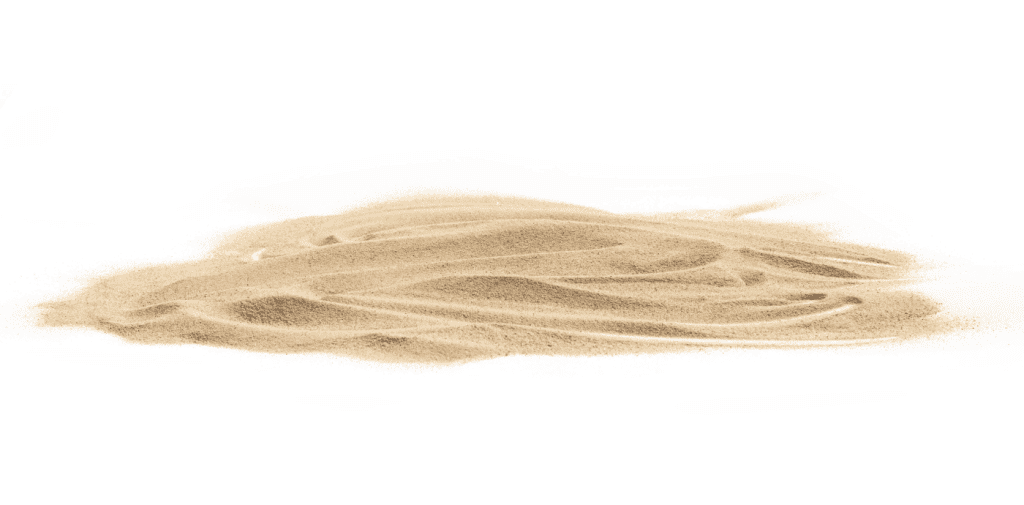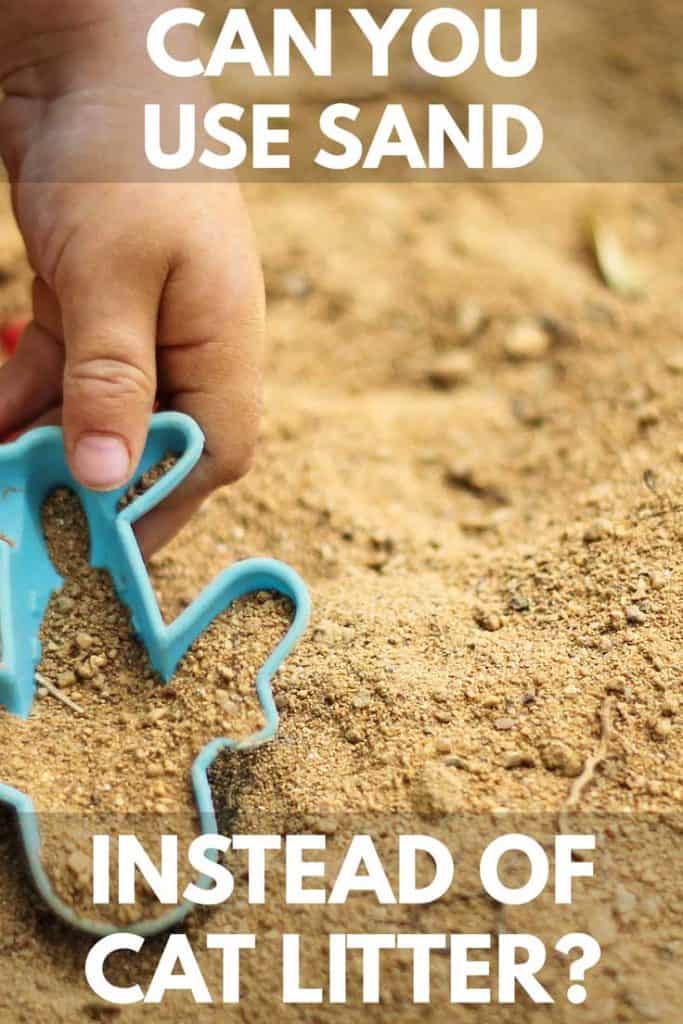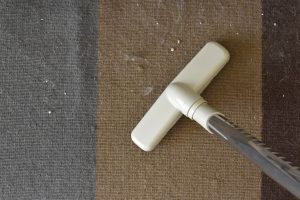Finding yourself out of cat litter can cause a bit of a panic. But what if there's an affordable, readily available alternative right under your feet? In this article, we answer the pressing question: Can you use sand instead of cat litter?
Will it do the job well enough, or could it potentially cause more harm than good? You might be surprised at what you'll discover.
We'll thoroughly examine the advantages and disadvantages of using sand as a substitute for traditional cat litter. We'll also provide some handy tips on how to make the transition smoother if you decide to take this route.
Stick with us and learn all about this intriguing cat litter alternative. Don't worry, we won't leave any stone unturned - or in this case, any grain of sand unexplored.
Sand As Cat Litter: A Practical Alternative?
Whether you've run out of cat litter or are simply exploring cost-effective alternatives, the idea of using sand might have crossed your mind.
Can sand replace cat litter effectively? The answer is yes, it can. Sand can indeed serve as an alternative to conventional cat litter in your feline friend's box.
However, it's important to recognize that using sand is not a perfect solution in every scenario. Like anything else, it comes with its own set of advantages and potential challenges.
Read on to understand better how to navigate these waters and ensure a positive experience when using sand as an alternative cat litter.

Benefits Of Sand As A Cat Litter Substitute
Why might you consider using sand in your cat's litter box? Let's dive into the reasons.
Benefit #1: Clumping Power
If you're a fan of clumping cat litter, then sand is not a bad option for you.
Actual sea sand should form loose clumps when wet, so you can easily remove all waste from the cat box. This means having to dump and replace the whole box less frequently.
Benefit #2: Safety For Your Cat
Many cat litters are designed with humans in mind, which can make them dangerous for your feline friend. For example, they may have chemicals to cover odors that can harm cats if they eat them.
Another common danger of cat litter is clay clumping litter. There have been a few cases of cats that ingested the clay dust while grooming themselves. The particles then clumped in their digestive tracts and caused some serious problems.
With sand, even if your cat eats a little, it doesn't pose a threat to their well-being.
Benefit #3: A Natural Eco-Friendly Choice
Sand is 100% natural, which limits its environmental impact both when it's packaged and disposed of. This is also what makes it safe for your cat since there aren't chemicals added to it.
So, if you prefer natural products, sand is a way to do that.
Benefit #4: Cats Naturally Prefer Sand
If you've ever had an uncovered sandbox for your kids, you know how much cats love using sand. In fact, if you're having trouble getting your cat to use the litter box, sand might encourage her to do so.
Keep in mind that this isn't always the case, since it's also possible that a change of litter could make your cat decide to look for other options.
If you're making a permanent switch to sand and not just using it for an emergency situation, gradually transition to sand.
Benefit #5: Inexpensive Solution
The final reason people choose sand for cat litter is that it's inexpensive. Most of the time, you can get a bag of playground sand for less than a bag of cat litter.
Or, if you have access to free sand, then you won't have to pay anything for your cat litter!
Disadvantages Of Sand As A Cat Litter Substitute
Let's now pivot and consider the potential issues with using sand as cat litter.
Disadvantage #1: Doesn't Absorb Odors
This is one of the biggest drawbacks for many people. Sand simply isn't going to absorb litter box odors on its own.
As you'll see in the next section, there are things you can do to control the odor when using sand in the litter box.
Disadvantage #2: It Can Be Messy
With its fine particles that stick to your cat’s feet, sand can be a messy litter alternative.
Some cats may also enjoy the change in litter TOO much and end up playing in the sand, leaving you with a huge mess to take care of.
Disadvantage #3: Potential Health Risks
We said before that sand was safe, so what gives? If you buy sand by the bag, it's likely safe for your cat.
However, if you collect it yourself, it may be harboring parasites and dangerous bacteria. So, you'll need to sanitize this litter first.
Step-By-Step Guide: Using Sand In Your Cat's Litter Box
To combat the three main problems associated with using sand in the litter box, there are steps you should take before filling your cat's box with this substrate.
Depending on your situation and where you get the sand from, you may need to do all of these or none at all!
Step #1: Sanitize The Sand
If you are bringing cat litter in from outside, you will need to make sure it's free from diseases and parasites before you fill the cat box.
To kill any bacteria or parasites that may be lurking in the sand, bake it in the oven for at least 10 minutes at 260 degrees Fahrenheit.
Make sure you let it cool completely before adding it to your kitty’s litter box so you don’t risk burning her little paws!
Step #2: Tackle The Odor
To control the odors that come with a litter box, mix a generous amount of baking soda with the sand.
Alternatively, you can sprinkle it on the bottom of the pan before adding the sand. This can control litter box odors as well as or even better than most cat litter.
Read more: Should you use baking soda in the litter box
Step #3: Get A Litter Mat
Adding a litter mat beneath or in front of your cat's litter box will help prevent him from scattering litter throughout your entire house.
Litter mats are designed to grab and trap litter particles as your cat leaves the litter box.
Step #4: Setting Up The Litter Box
Once you’ve taken as many of these additional steps as you need, you can add the sand to the litter box as you normally would. Add 2 - 3 inches (5 - 7 cm) of sand to the litter box and allow your cat to use it as usual.
If you have a cat that likes to dig and a litter box with high sides, you may want to add some more sand to satisfy this urge to dig. This will keep your cat happier and may keep clumps from getting stuck to the bottom of the pan.
As with all types of litter, you’ll want to scoop it once or twice daily. If you have multiple cats, you’ll need to scoop even more often unless you have several litter boxes.
Dump and replace all of the sand several times a month, and be sure to thoroughly clean the cat box at least once a month. As your plastic litter box becomes scratched and damaged, you’ll need to replace it.
Where Can You Get Sand For The Litter Box?
Your best bet for acquiring sand is to purchase it, specifically, the type meant for children's sandboxes. Amazon provides some safe and effective options:
- Organic Play Sand: This pure play sand is sold in 5 lb sacks, designed to foster kids' creativity. It can serve well as a natural, safe, and clump-forming litter box filler for your cat.
Click Here To See Organic Play Sand On Amazon
2. Quikrete Play Sand: A more affordable choice, this pre-packaged sand isn't organic but it's clean. Do note that its 50 lbs size might require extra storage space.
Click Here To See Quikrete Play Sand On Amazon
Exploring Other Cat Litter Alternatives
Sand can prove to be a viable cat litter substitute, whether you're in an emergency situation or seeking an eco-friendly alternative. While it has a few drawbacks, strategic measures can effectively mitigate these issues.
If you're still unsure about whether sand is the right fit for your cat, don't fret! Plenty of other materials can serve as litter box fillers, including:
- Wood shavings
- Wood pellets
- Shredded newspaper
- Chicken feed
You can learn more about these and get more information on litter boxes and cat litter by checking out this post about cat litter substitutes.
There, you can find everything you need to know to make sure your cat can take care of his business in style and comfort.
Final Thoughts And Tips: Making The Sand Switch For Cat Litter
In conclusion, using sand as a cat litter substitute can be a cost-effective, environmentally friendly option. It offers advantages such as natural clumping and safety for your furry friends.
However, it does come with potential downsides like not effectively absorbing odors and being potentially messy.
With a few proactive measures, you can manage these issues effectively. These steps include regular sanitation of the sand, the use of baking soda for odor control, and incorporating a litter mat to control the mess.
When considering where to purchase the sand, pre-packaged sandbox sand is a safe and practical choice.
Remember, it's crucial to introduce any new litter gradually to your cat to allow them to adjust. If you're making a permanent switch to sand, transition slowly and observe your cat's reactions.
Lastly, if sand doesn't seem to work for you and your cat, various other substitutes such as wood shavings, wood pellets, shredded newspaper, and chicken feed are available to try.
Navigating through cat litter alternatives can be a journey, but it's worthwhile when you find an option that works best for you, your cat, and the environment. Keep exploring and remember, the perfect solution might be just around the corner!





![cat examines kitty litter box with eco-friendly silicate litter - Can You Wash and Reuse Crystal Cat Litter? [Answered]](https://litter-boxes.com/wp-content/uploads/2023/08/cat-examines-kitty-litter-box-with-eco-friendly-silicate-litter-300x200.jpg)

Is the salt in sea sand harmful to cats?
That would depend on how salty the sand is. Too much salt could be harmful or just uncomfortable for a sensitive cat’s paws.